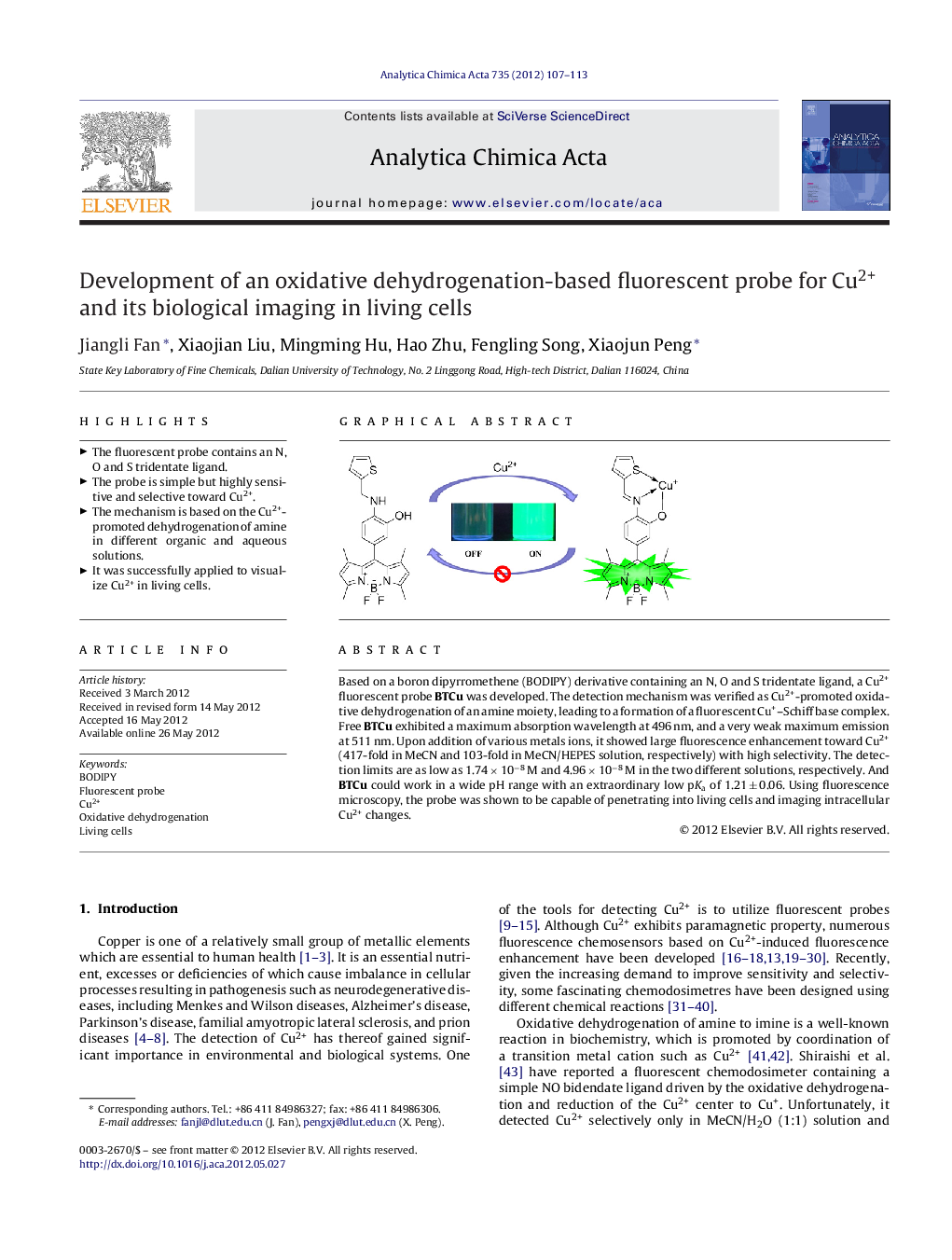| کد مقاله | کد نشریه | سال انتشار | مقاله انگلیسی | نسخه تمام متن |
|---|---|---|---|---|
| 1166003 | 1491097 | 2012 | 7 صفحه PDF | دانلود رایگان |

Based on a boron dipyrromethene (BODIPY) derivative containing an N, O and S tridentate ligand, a Cu2+ fluorescent probe BTCu was developed. The detection mechanism was verified as Cu2+-promoted oxidative dehydrogenation of an amine moiety, leading to a formation of a fluorescent Cu+–Schiff base complex. Free BTCu exhibited a maximum absorption wavelength at 496 nm, and a very weak maximum emission at 511 nm. Upon addition of various metals ions, it showed large fluorescence enhancement toward Cu2+ (417-fold in MeCN and 103-fold in MeCN/HEPES solution, respectively) with high selectivity. The detection limits are as low as 1.74 × 10−8 M and 4.96 × 10−8 M in the two different solutions, respectively. And BTCu could work in a wide pH range with an extraordinary low pKa of 1.21 ± 0.06. Using fluorescence microscopy, the probe was shown to be capable of penetrating into living cells and imaging intracellular Cu2+ changes.
Figure optionsDownload as PowerPoint slideHighlights
► The fluorescent probe contains an N, O and S tridentate ligand.
► The probe is simple but highly sensitive and selective toward Cu2+.
► The mechanism is based on the Cu2+-promoted dehydrogenation of amine in different organic and aqueous solutions.
► It was successfully applied to visualize Cu2+ in living cells.
Journal: Analytica Chimica Acta - Volume 735, 20 July 2012, Pages 107–113